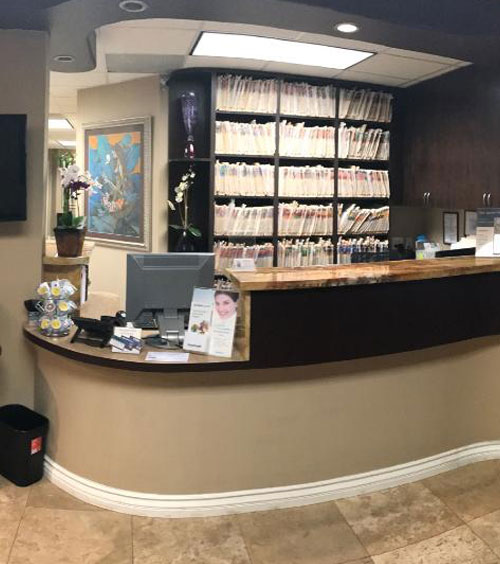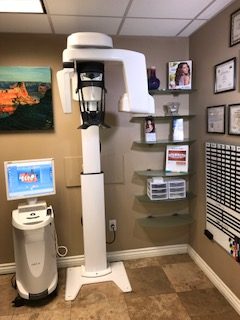Periodontal Plastic Surgery
As one of many specialty periodontal procedures performed by our office, crown lengthening is a long-lasting restorative process utilized to help patients regain a beautiful smile and allow them to eat and speak with comfort and confidence.
Dental crown lengthening is a surgical procedure that involves the removal of gum or bone tissue with the aim of exposing more of the tooth’s structure. Dental crown lengthening is often done to prepare your tooth for a dental crown, but it may also be completed for cosmetic reasons, such as to correct a “gummy” smile. In either case, dental crown lengthening should be completed by a board-certified periodontist who specializes in treating gum disease and is experienced in restorative dental procedures.
"My experience with Dr. Akef was exceptional from start to finish. From the moment I walked into the office, I was treated with care and attentive customer service"
-Olivia

When is dental crown lengthening needed?
When there is insufficient tooth structure beyond the gum line for a dental crown to be attached, a crown may be ill-fitting, causing irritation and inflammation around the gums. When a tooth is decayed or broken all the way down to the gum line, a dental crown cannot be placed securely. In either case, your dentist may need to perform a dental crown lengthening procedure to expose some of the tooth structure in order to properly attach the dental crown. Another reason dental crown lengthening may be needed is to treat “gummy” smiles. In this case, the purpose of the dental crown lengthening procedure is to give a patient the appearance of longer teeth by sculpting the gum line in a way that exposes more of the tooth.
How does the dental crown lengthening procedure process work?
Crown lengthening is a routine surgical procedure that may be performed on a single tooth, several teeth, or along the entire length of one’s gum line. The procedure is fairly simple and can be completed under a local anesthetic; however, heavier sedation is available for those who are more fearful of dental procedures.
Once you are comfortable, Dr. Akef will remove any temporary crowns that are in place. Then, he will make incisions around the surrounding gum tissue to pull the gum away from the tooth, exposing more of the tooth structure. Sometimes, the removal is minor. Other times, the removal may be more extensive or require some bone to be removed as well. Once the tissue is removed and the tooth exposed, the area is washed with saline water and stitched or covered with a special bandage to hold the gum tissue in place.
For the patient’s comfort, a local anesthetic is used to numb the surgical area. Typically, little to no discomfort is felt as your periodontist reshapes the gum and bone tissue to expose more structure of the damaged tooth. Following the surgery, the treated area may be a little tender, sore or swollen; painkillers and antibiotics may be prescribed to help relieve discomfort and prevent infection from occurring.
In most cases, recovery time after crown lengthening surgery is minimal, and patients can resume their normal routines the day after surgery. If you do not like your gummy smile or have a tooth that is broken or decayed at the gum line, contact San Diego Dental Implants & Periodontics today to learn how dental crown lengthening can help.








